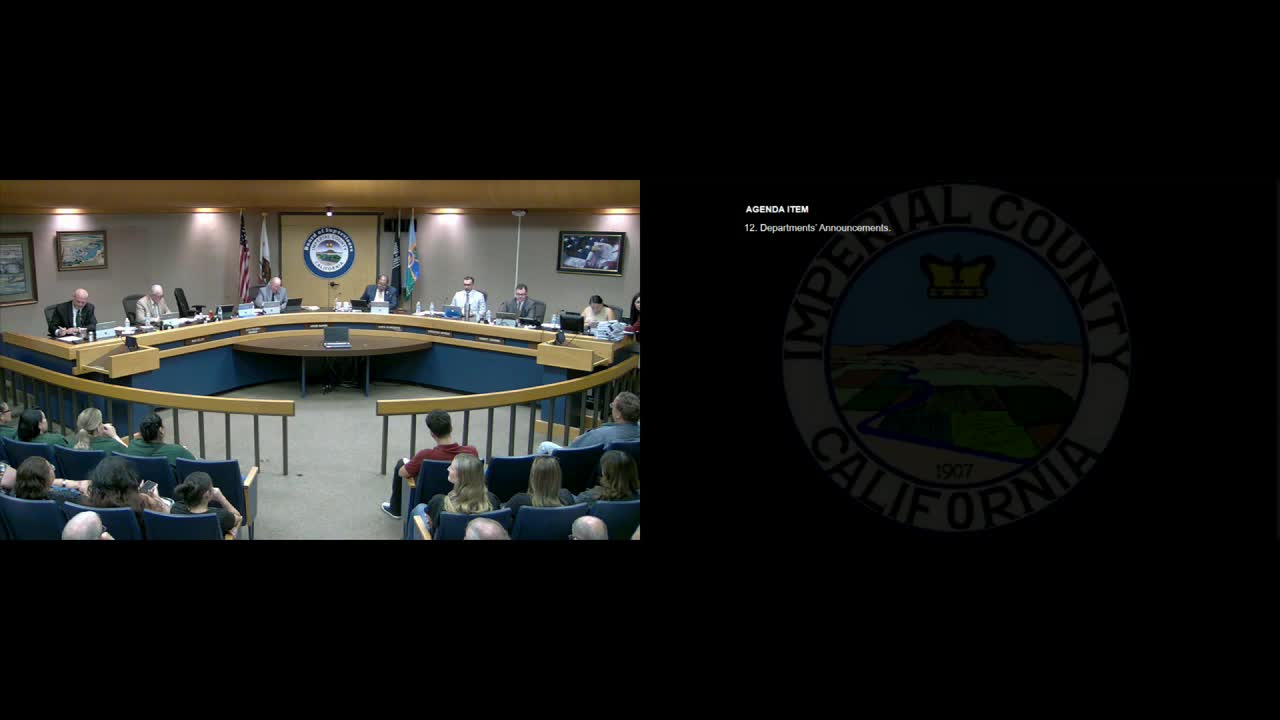Imperial County plans ambitious lithium recovery initiative
September 10, 2024 | Imperial County, California
This article was created by AI summarizing key points discussed. AI makes mistakes, so for full details and context, please refer to the video of the full meeting. Please report any errors so we can fix them. Report an error »

In a recent government meeting, the Imperial County Board discussed the adoption of a lithium excise tax funding plan, presented by Deputy CEO Barry Beam. The plan, which is still in its speculative stages, aims to capitalize on the county's potential lithium resources derived from geothermal brine. Currently, there are no commercial lithium producers in the area, and the timeline for revenue generation is projected to be at least four to five years away.
Beam emphasized that the lithium recovery process in Imperial County differs significantly from traditional mining methods, which can be environmentally damaging. Instead, the county plans to utilize geothermal energy, a renewable resource that has been operational for over 40 years. This method not only minimizes environmental impact but also allows for agricultural activities to coexist alongside energy production.
The presentation highlighted the estimated lithium reserves in the county, ranging from 4 million to 18 million metric tons, with the potential to produce up to 200,000 metric tons of lithium annually. This output could support the production of approximately 375 million electric vehicle batteries, enough to power the entire U.S. electric vehicle fleet.
The meeting also addressed the importance of understanding the distinction between the geothermal reservoir and the Salton Sea, clarifying that no lithium extraction will occur from the Salton Sea itself. The board's discussions underscored the county's commitment to sustainable lithium recovery, positioning Imperial County as a potential leader in the green energy sector.
Beam emphasized that the lithium recovery process in Imperial County differs significantly from traditional mining methods, which can be environmentally damaging. Instead, the county plans to utilize geothermal energy, a renewable resource that has been operational for over 40 years. This method not only minimizes environmental impact but also allows for agricultural activities to coexist alongside energy production.
The presentation highlighted the estimated lithium reserves in the county, ranging from 4 million to 18 million metric tons, with the potential to produce up to 200,000 metric tons of lithium annually. This output could support the production of approximately 375 million electric vehicle batteries, enough to power the entire U.S. electric vehicle fleet.
The meeting also addressed the importance of understanding the distinction between the geothermal reservoir and the Salton Sea, clarifying that no lithium extraction will occur from the Salton Sea itself. The board's discussions underscored the county's commitment to sustainable lithium recovery, positioning Imperial County as a potential leader in the green energy sector.
View full meeting
This article is based on a recent meeting—watch the full video and explore the complete transcript for deeper insights into the discussion.
View full meeting
